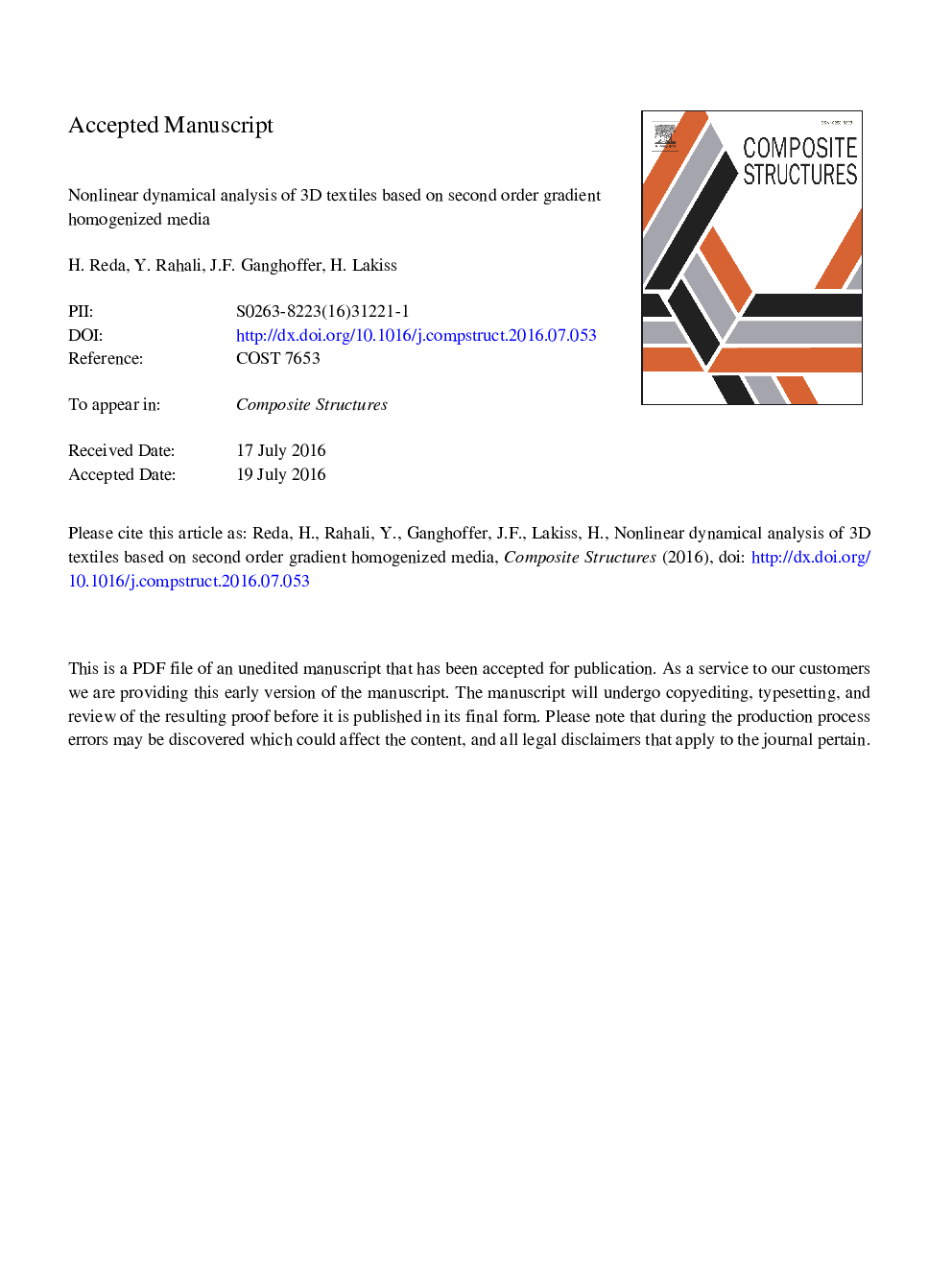| Article ID | Journal | Published Year | Pages | File Type |
|---|---|---|---|---|
| 6705141 | Composite Structures | 2016 | 32 Pages |
Abstract
The general objective of this contribution is the analysis of wave propagation phenomena within architecture media, relying on an effective substitution continuum obtained by homogenization. The proposed methodology is quite general and applicable to any 3D repetitive network of beam-like structural elements, considering beams undergoing large transformations. Based on the writing of the equations of motion of a nonlinear second order effective gradient continuum, we analyze the nonlinear wave propagation in the obtained homogenized nonlinear second order gradient continuum. The resulting wave equations are of Boussinesq type, the solution of which being elliptic functions. The influence of the degree of nonlinearity on the dispersion relations is analyzed, highlighting subsonic and supersonic modes propagating respectively with a velocity lower (resp. higher) than the velocity of linear non-dispersive waves. Subsonic and supersonic modes correspond respectively to regimes of high and low nonlinearity characterized by the so-called universal constant. The three modes of propagation (longitudinal, vertical and horizontal shear) are compared in terms of dispersion relations, phase and group velocity diagrams. The existing anisotropy of wave propagation becomes more marked when the degree of linearity increases. The horizontal and vertical shear modes disappear successively when increasing the wavenumber.
Related Topics
Physical Sciences and Engineering
Engineering
Civil and Structural Engineering
Authors
H. Reda, Y. Rahali, J.F. Ganghoffer, H. Lakiss,
